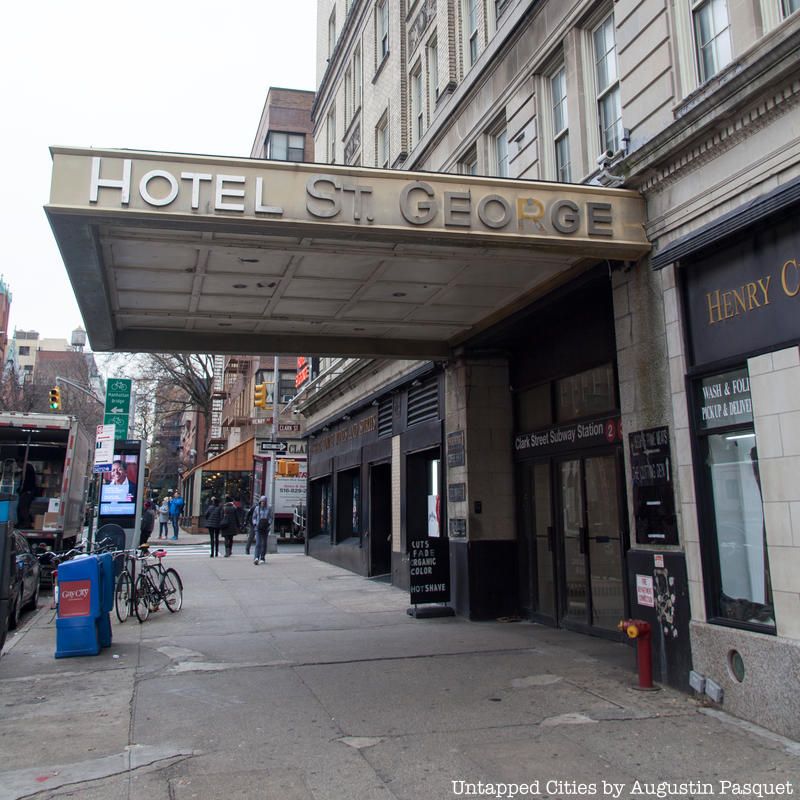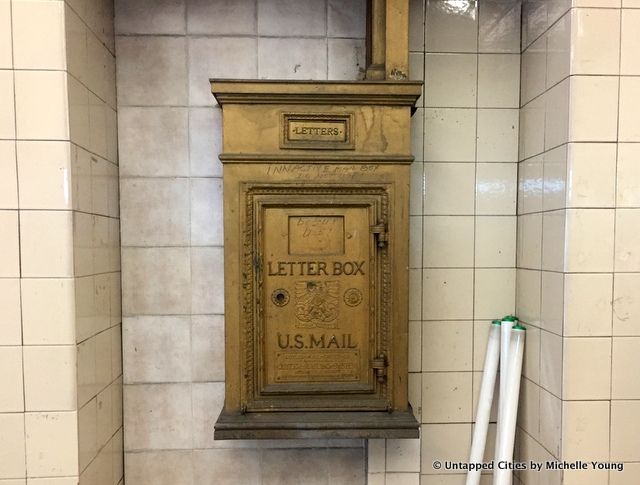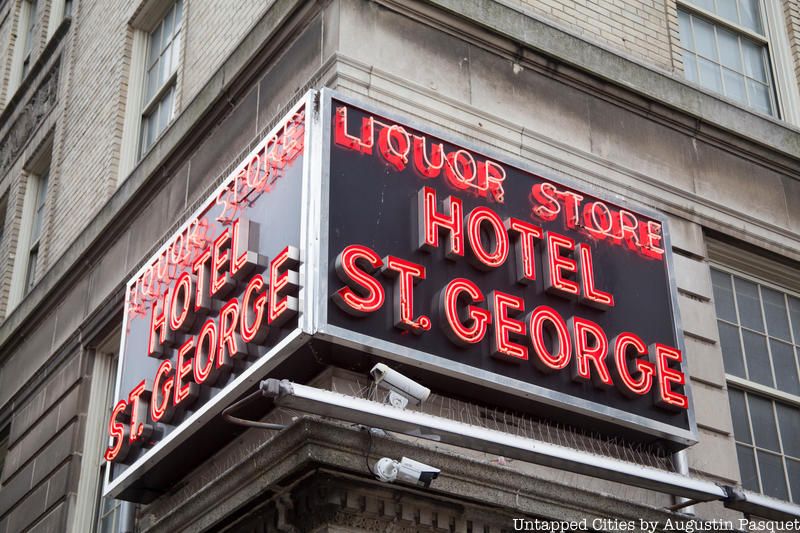The Berkshires Bowling Alley that Inspired "The Big Lebowski"
It’s been 36 years since the release of The Big Lebowski, the irreverent cult comedy by Joel and Ethan


The Hotel St. George in Brooklyn Heights was once the largest hotel in New York City, built between 1885 and 1929. It was a hotspot for celebrities like Truman Capote, Duke Ellington, Leonard Bernstein, Presidents Roosevelt and Truman, with a rooftop Egyptian nightclub, 17 ballrooms, and a pool renown for ornamentation and use of salt water. Today it sits in the heart of the neighborhood, serving as the entrance to the Clark Street subway stop, with transit goers streaming in and out of it daily probably unaware of its full history. This isn’t surprising, given what little is left of the building interior and in particular, the lobby, which is now the entrance corridor to the subway.
Indeed, while a large portion had been converted into co-ops in the 1970s and 80s, the once celebrated hotel had fallen into disrepair, housing what the New York Times described in 1995 as “a number of homeless people and AIDS patients — placed there by city agencies.” That year, most of the interior of the St. George Hotel complex which was destroyed in a massive fire which required 500 firefighters to put out, accidentally set by a con-man while scavenging for copper in the building.
But if you look closely, there are still some great remnants to discover in the St. George Hotel

In its 1995 report of the fire, the New York Times described, “Where a grand staircase and twin pillars formerly led to the front desk of the largest hotel in New York City, only the exterior walls remained standing.” Ironically, the hotel extension completed by Emery Roth, architect of the San Remo and more, was once advertised as “absolutely fireproof.” Most of the original lobby, parceled off to a developer in 1984, was converted somewhat haphazardly into the only entrance of the Clark Street subway station. Most of this entrance corridor is nondescript, even run down, with exposed fluorescent overhead lights, mismatched wall tiling, and functional businesses like a deli, flower shop and the like.

One item that appears to have remained from the hotel days is the Cutler metal mailbox. Digging into this particular model, it carries the original logo of Cutler, a Gothic-style eagle which remained only in use until the 1930s, as reported by the book Art Deco Mailboxes. In later models, the Gothic eagle morphed into an Art Deco one.

Scaffolding has been up for several years now at the Hotel St. George, and despite all of the renovations (co-op conversions, dormitory housing, and the like), the original awnings that spell out HOTEL ST. GEORGE have remained on both the Henry Street side (formerly the main entrance) and the Clark Street side.

On the corner of the building at the intersection of Clark Street and Henry Street is a neon sign, for “LIQUOR STORE HOTEL ST. GEORGE.” The wine shop below it, “Michael-Towne Wine & Spirits” was first opened in 1934, and as the Town Wine & Spirits (before the merger with Michael Wines in Brooklyn Heights) was the 65th store to obtain a license to operate in New York State following the repeal of Prohibition. Today the red neon sign is somewhat obstructed by the ever-present scaffolding.
Though the multi-story pool space has been converted into a gym, the original green tiled-columns and mosaics are still present, a discovery first reported by Scouting NY. Following Scouting NY’s article, a reader involved in the renovation revealed an even juicier remnant: the original pool still exists below the current one stating “The pool still exists. We were not allowed to nail, chip, or remove any part of the original pool complex. We ran sleepers (beams) across the pool and floor area and built the new floor on the sleepers. The new pool is suspended from this floor, set into the larger existing pool.”
Subscribe to our newsletter